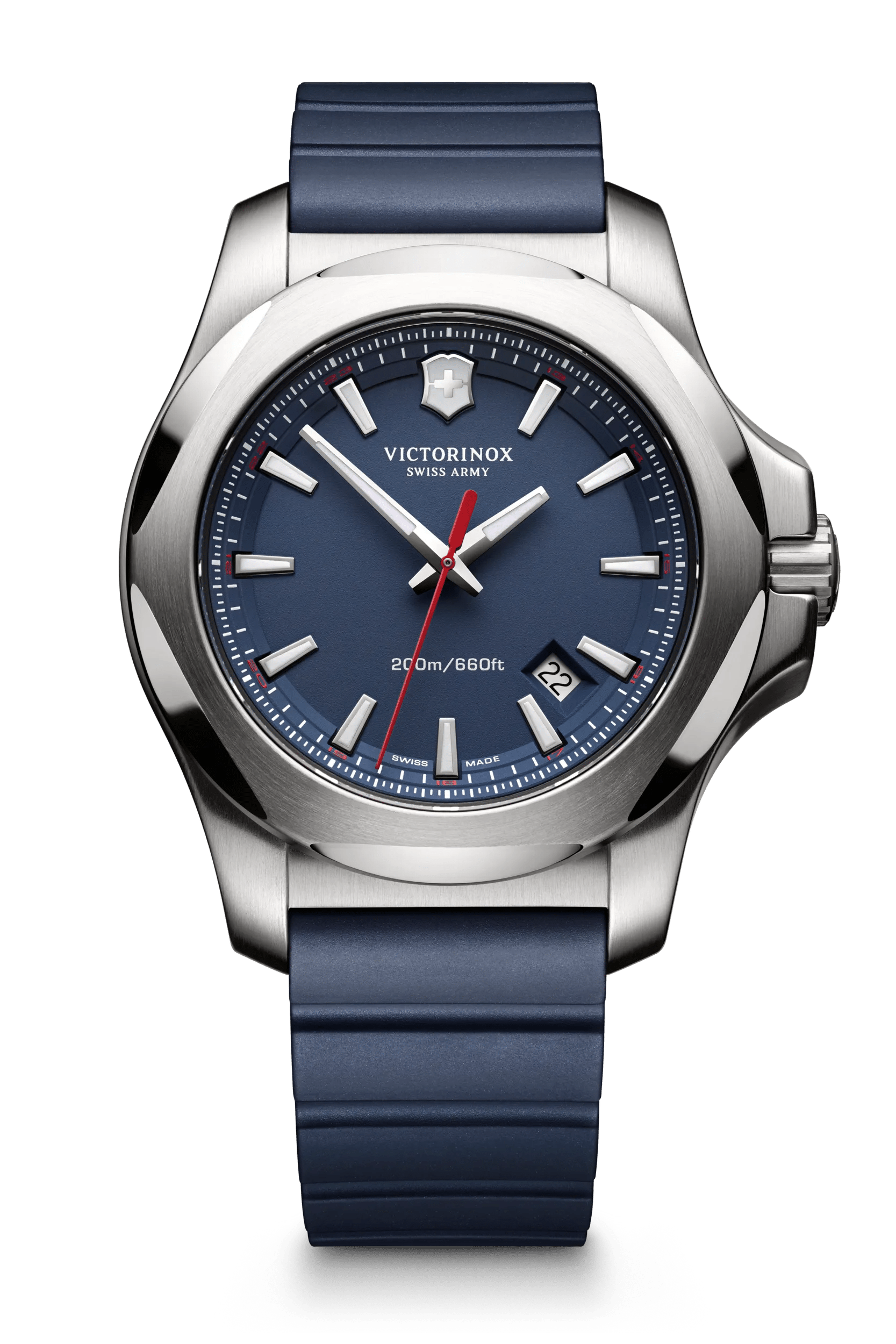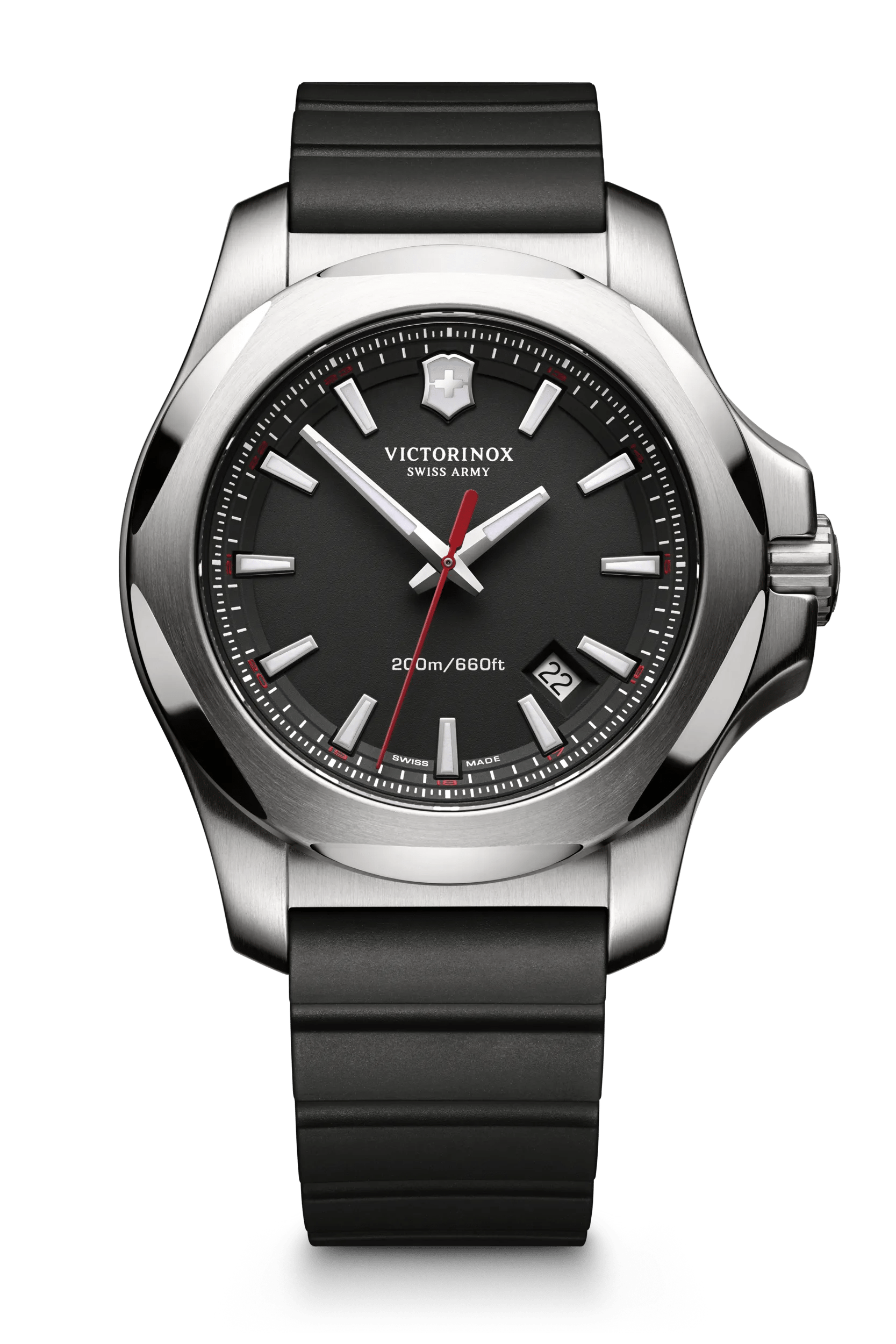The future of stainless steel
Victorinox and ECAL innovate the material of the I.N.O.X. watch
To explore the possibilities of stainless steel in the watch industry, we wanted to ask the next generation of up and coming designers about their take on this traditional material. So we were delighted to collaborate with one of the most famous and innovative design schools in the world: the renowned école cantonale d’art Lausanne, in short: ECAL. Students from all over the world borrowed from areas such as medical surgery, nanotechnology or biomimicry, and applied this knowledge to the world of watches.
A story of tradition and innovation
Over the years we have built quite some expertise in working with stainless steel. About 100 years ago we were the first knife company in the world to work with this material. This innovation marked such a turning point in the quality of our products, that in 1921, we integrated the name for non-rusting steel “inox” into our brand name.
Ever since then, stainless steel has been at the core of our work. It’s this expertise which led us to the world of watches. With all our experience, it just seemed natural to start manufacturing timepieces. And that’s how the legendary I.N.O.X. was born: an homage to a material that keeps stunning us with its ingenuity.
Join us to explore the fascinating possibilities of stainless steel.
Stainless steel – 1 material, 11 innovations
When light beams get focused and then diverted by a reflective material, caustics are created. For example the light reflection in a swimming pool. Applying an engraving according to the principles of light caustics on a watch surface, adds an almost “magical property”. Image: picture taken by student, Rayform SA
Le projet a été dirigé par Alexis Georgacopoulos, directeur de l’ECAL, et Thilo Alex Brunner, directeur du design de produits de référence à l’ECAL. Suivant leur initiative, le designer et professeur à l’ECAL Alexander Taylor a guidé des étudiants internationaux tout au long d’un projet de trois mois visant à explorer de nouvelles possibilités d’utilisation de l’acier inoxydable.
Alexander Taylor, quel est l’avenir de l’acier inoxydable dans l’industrie des montres ?
Pourquoi vous êtes-vous concentré sur ce matériau pour votre projet sans concevoir de montres ?
Je pense que les étudiants et les designers doivent apprendre de nouvelles compétences leur permettant d’avoir une approche pluridisciplinaire et de ne pas travailler que sur l’objet fini mais d’explorer d’abord les techniques sans connaître les paramètres de l’objet. Le caractère de l’objet et l’opportunité de créer quelque chose de nouveau naissent d’une collaboration avec les créateurs et d’une compréhension du designer d’adapter les technologies à un besoin particulier au niveau de l’esthétisme et de la production. Au cours de ce processus, on découvre inévitablement des opportunités allant au-delà des consignes. En ne s’intéressant pas au design précis d’une montre, on laisse le processus suivre son cours et influencer le résultat final.
En quoi l’acier inoxydable est-il un matériau si intéressant à travailler ?
Il présente une qualité industrielle tellement belle et fonctionnelle, il est en quelque sorte technologique et très familier ! C’est un matériau capable de stimuler les sens, associé à un produit/des structures innovants et aux performances. Toutefois, grâce à ce projet, nous avons illustré comment prendre une matière si familière et quand même proposer des moyens complètement nouveaux de fabrication ou de traitement.
Alex Taylor, designer britannique récompensé, professeur à l’ECAL
Share via e-mail
Success!
Your message was successfully sent.
Error!
There was an error while trying to send your message. Please try again.
Your product has been added to your cart


